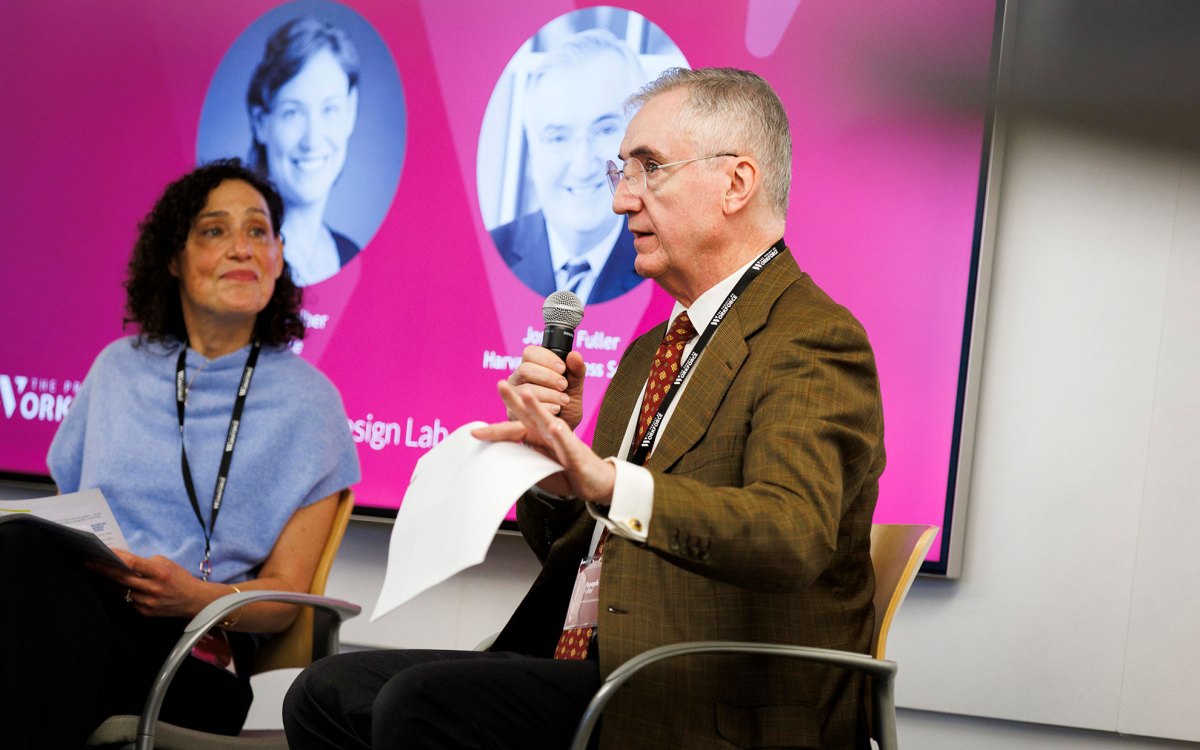Beijing restrictions offer case study in emissions of key atmospheric gases
The Chinese government’s restrictions on Beijing motorists during a three-day conference last November — widely viewed as a dress rehearsal for efforts to slash smog and airborne pollutants during the 2008 Summer Olympic Games in Beijing — succeeded in cutting the city’s emissions of one important class of atmospheric gases by an impressive 40 percent.
That’s the conclusion of Harvard University researchers Michael B. McElroy, Yuxuan Wang, and K. Folkert Boersma, who used data from the Dutch-Finnish Ozone Monitoring Instrument (OMI) to assess the drop in emissions. The scientists detail their work this week in the journal Geophysical Research Letters.
“I don’t think a proper analysis has ever been made before of such a remarkable shift of environmental policy in such a short period of time,” says McElroy, the Gilbert Butler Professor of Environmental Studies in Harvard’s Faculty of Arts and Sciences (FAS) and School of Engineering and Applied Sciences (SEAS).
China’s restrictions on Beijing drivers coincided with the Summit of the Forum on China-Africa Cooperation, Nov. 4-6, 2006, during which an estimated 800,000 of Beijing’s 2.82 million vehicles were taken off the road. The OMI — aboard NASA’s Aura satellite, launched in 2004 — documented a 40 percent reduction in NOx, a class of nitrogen oxides formed during combustion, while the restrictions were in place. These greenhouse gas emissions are thought to contribute, in part, to global warming.
“Traffic restrictions implemented during the Sino-African Summit were remarkably successful in reducing emissions of NOx,” says Wang, a postdoctoral fellow at SEAS. “We expected a drop in nitrogen emissions, but not to this extent, and after only a short period of time.”
The measured reduction may also imply a more effective regulatory strategy than has been presented by the Chinese media. Recent estimates say that during nonheating seasons, nearly 70 percent of all NOx emissions in the Beijing area are from vehicular emissions. Using this as a standard, McElroy, Wang, and Boersma calculated that there would need to be a 50 percent reduction in vehicular use in Beijing to account for the observed 40 percent reduction in NOx. This stands in contrast to the 30 percent reduction reported by China.
Wang is quick to downplay this inconsistency. “We’re not sure what this means, and there will definitely need to be more detailed data on vehicle energy usage, like gasoline sales data, to develop a more precise value,” she says.
Last November’s driving restrictions ranged from regulating access to specific roads to restricting use of both private and government vehicles. China, the world’s second-largest producer of greenhouse gases behind the United States and a major source of atmospheric NOx, is expected to duplicate these traffic restrictions during the 2008 Summer Olympic Games.
“I think the real value here is that these kinds of restrictions can really bring about significant change,” says McElroy. While he and his team are hesitant to leap to conclusions, they maintain that similar events in the future, such as the 2008 Olympic Games themselves and traffic reductions expected to be implemented this summer as a rehearsal for the Olympics, will offer valuable opportunities for further study of the processes determining the quality of air over Beijing.
“Coordinated observations on such occasions can provide precious opportunities to test and refine our understanding of atmospheric chemistry not only for Beijing but also for the large region of East Asia,” McElroy says.
McElroy, Wang, and Boersma worked in collaboration with NASA and Henk J. Estes and J. Pepijn Veefkind of the Royal Dutch Meteorological Institute. Boersma worked on the OMI satellite instrument in the Netherlands before joining Professor Daniel Jacob’s atmospheric research group at Harvard. The research was supported by the National Science Foundation.




